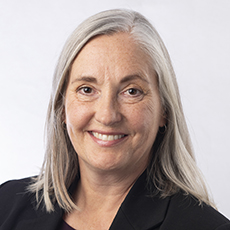Scholars have been researching teacher attraction, retention and shortages in Canada, the U.S. and other countries for some time now. See et al. (2020) explains that “attracting and retaining qualified teachers is a persistent problem that has plagued many countries for decades”
(p. 1). Examining trends in teacher demographics is an important component of understanding factors that may drive teacher shortages. This article is the first of a two-part series examining what has been learned in other jurisdictions about teacher demographics over the past 30 years.
The United States, unlike Canada, collects in-depth data about teachers through the National Center for Education Statistics, which administers a Schools and Staffing Survey and Teacher Follow-Up Survey once every three to four school years. Consequently, in the U.S., there are significant sets of data that scholars have drawn upon to better understand, at a large scale, what trends are impacting the American teaching profession. Ingersoll et al. (2018) analyzed eight cycles of survey data over a 29-year period to identify trends that are impacting the teaching profession in the U.S. Their findings include the following five trends.
- The number of teachers has grown faster than the student population has grown. Ingersoll et al. (2018) suggest several potential reasons for this: smaller class sizes in elementary schools, more specialist teacher positions being created, an increased focus on special education and the introduction of charter schools. But they acknowledge this is an area that requires further attention by researchers. Naturally, if the complement of teachers in the U.S. has grown to address specific needs in the student population, it is easy to see how pressure may occur to generate enough teachers to fill the teaching positions, particularly for positions that are in high demand.
- The teaching force has “gotten older, and teacher retirements have steadily increased.” This finding suggests that while retirement comprises a significant component of those who exit the teaching profession in the U.S., there turnover for other reasons in schools and school jurisdictions. The implication is that educational researchers, policy makers and boards of education need to consider why teachers leave their positions and put in place solutions that mitigate teacher turnover.
- While the teacher workforce is getting older, it is also getting more inexperienced because new teachers are often hired to replace retirees and those who leave their positions. While many incoming teachers are young, there are a “significant number that are older but inexperienced beginning teachers” who are “mid-career switching.” School staffs benefit from a range of experiences, from those who have long careers in education to those who are brand new to teaching. Ingersoll et al. (2018) pointed out that new teachers benefit from the mentorship of experienced teachers, and this helps new recruits develop effective teaching practice. The “greening” of the teacher work force at the same time as the “graying” of the teaching work force means school divisions must ensure early career teachers receive supports and mentoring.
- There has “been a slow but steady increase in the proportion of public school teachers who are female, from 67 per cent in 1980–81 to over 76 per cent in 2015–16” (p. 12). The authors suggest this may be due, in part, to more women teaching at the secondary level and more women entering into educational administration. They also suggest that “if the trend continues, we may see a day when eight of 10 teachers will be female” (p. 14). Finally, they raise the question of society’s views of women’s work, asking, “if the feminization of teaching continues, what will it mean for the way this line of work is valued and rewarded?” (p. 14). This is an important question in light of societal norms that still tend to devalue the worth of women’s work. The “pink professions” such as teaching and nursing have long struggled with public recognition of the value of their work and the need to support and compensate the work adequately.
- The American teaching force has become more diverse over the past three decades, but the proportion of racialized teachers has not grown at the same rate as the student population. As such, many students are not being taught by teachers who understand their racial and cultural backgrounds. The authors suggest that work to recruit diverse teachers needs to continue. In addition, Ingersoll et al. (2018) wrote “Minority teachers are two to three times more likely than white teachers to work in hard-to-staff schools serving high-poverty, high-minority, and urban communities” (p. 15) and that the turnover rate of minority teachers has risen by 45 per cent. The implication of this is that the efforts expended to recruit minority teachers are being set back by the high turnover rates. This calls for measures to support teachers to address teacher retention in schools, particularly high-needs schools in urban areas.
Teacher turnover is high—higher than many other occupations—which has been the case for many years. However, the authors point out that within the data, turnover is not evenly distributed. They noted that “almost half of all public school teacher turnover takes place in just one quarter of the population of public school teachers” (p. 18). High-poverty, high-minority urban schools and rural public schools tend to have the highest turnover rates. This trend calls on policy makers to examine how mechanisms can be put in place to attract and retain teachers into making teaching a viable career option.
How do these trends combine with the American educational context to exacerbate concern about teacher shortages? The U.S. has introduced educational reform in stunning ways. Some of the strategies used include blaming teachers for social problems, attacking teacher unions, fragmenting the public education system with the introduction of charter schools, mandating high-stakes testing, using high-stakes testing results to evaluate the effectiveness of schools and teachers, and developing alternative
pathways to certification for teachers (Ravich 2010).
References
Berliner, D., G.V. Glass and Associates. 2014.
50 Myths and Lies That Threaten America’s Public Schools: The Real Crisis in Education. New York, NY: Teachers College Press.
Ingersoll, R., E. Merrill, D. Stuckey and G. Collins. 2018. Seven Trends: The Transformation of the Teaching Force—Updated October 2018. University of Pennsylvania: Consortium for Policy Research in Education Research Reports. https://repository.upenn.edu/cpre_researchreports/108/
Ravitch, D. 2010. The Death and Life of the Great American School System: How Testing and Choice are Undermining Education. New York, NY:
Basic Books.
See, B.H., R. Morris, S. Gorard, D. Kokotsaki and S. Abdi. 2020. "Teacher Recruitment and Retention: A Critical Review of International Evidence of Most Promising Interventions." Education Sciences 10, no 10: 262. https://doi.org/10.3390/educsci10100262
Two-part seriesThis is the first part of a two-part series examining teacher shortages in the United States. The second part, which will appear in the winter 2023 issue of the ATA Magazine, will explore the American context in further detail, examining the impact of COVID-19 on teachers and teacher shortages as well as policy solutions to the shortages. |

Executive Staff Officer, ATA



